Mako Hot Folder Console
Introduction
Mako Hot Folder Console is a Windows utility whose purpose is to execute a workflow processor on print jobs copied to a designated folder, and to write the results to an output folder. It executes MICR Preprocessor, a utility that manipulates color in a PostScript or PDF job to reduce the use of (more expensive) MICR ink. It does this by converting colors of page components, including black and gray, to one composed only of cyan, magenta and yellow, while a 100% black (the MICR ink) is reserved for MICR characters that are recognized by their unique shape.
Installation
The installer is contained in a versioned ZIP file, e.g., MakoHolderFolderConsoleInstaller_39.zip
Download from the MCS support FTP folder. Unzip and run the installer, MakoHolderFolderConsoleInstaller.exe.
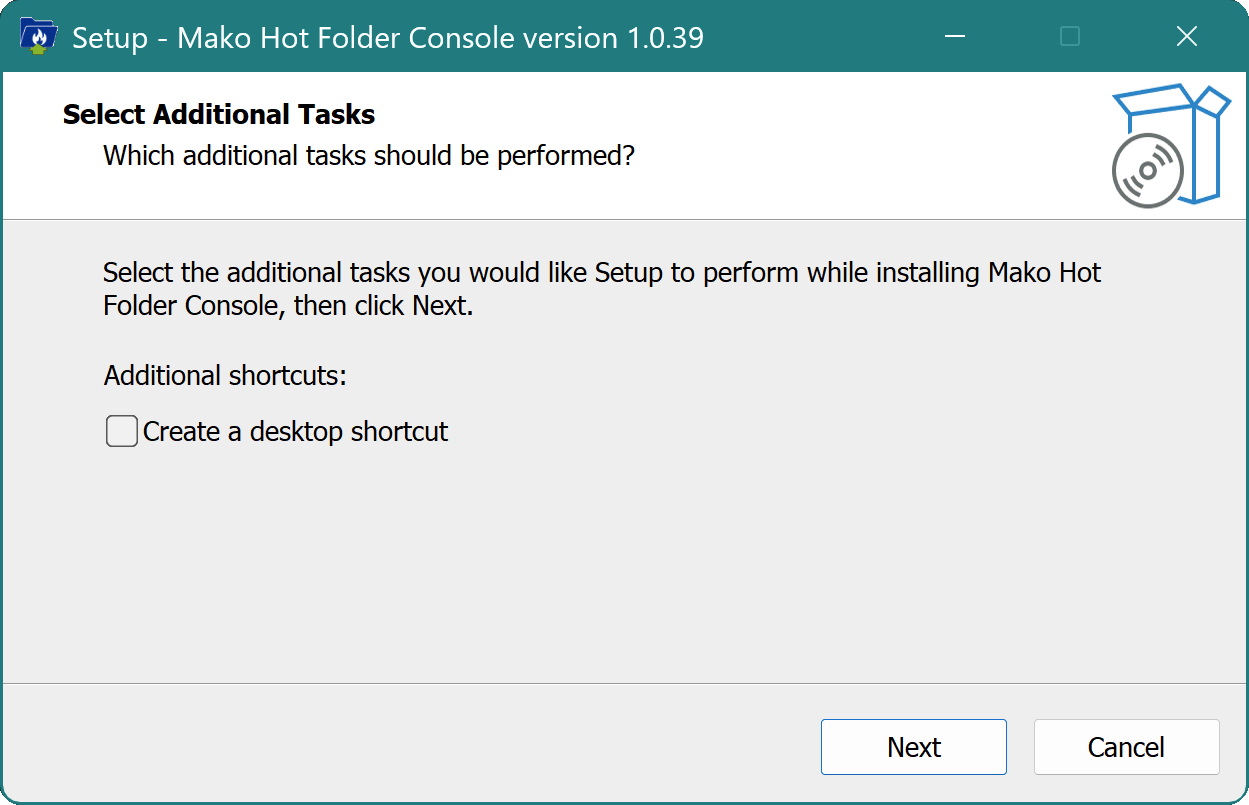 1. | 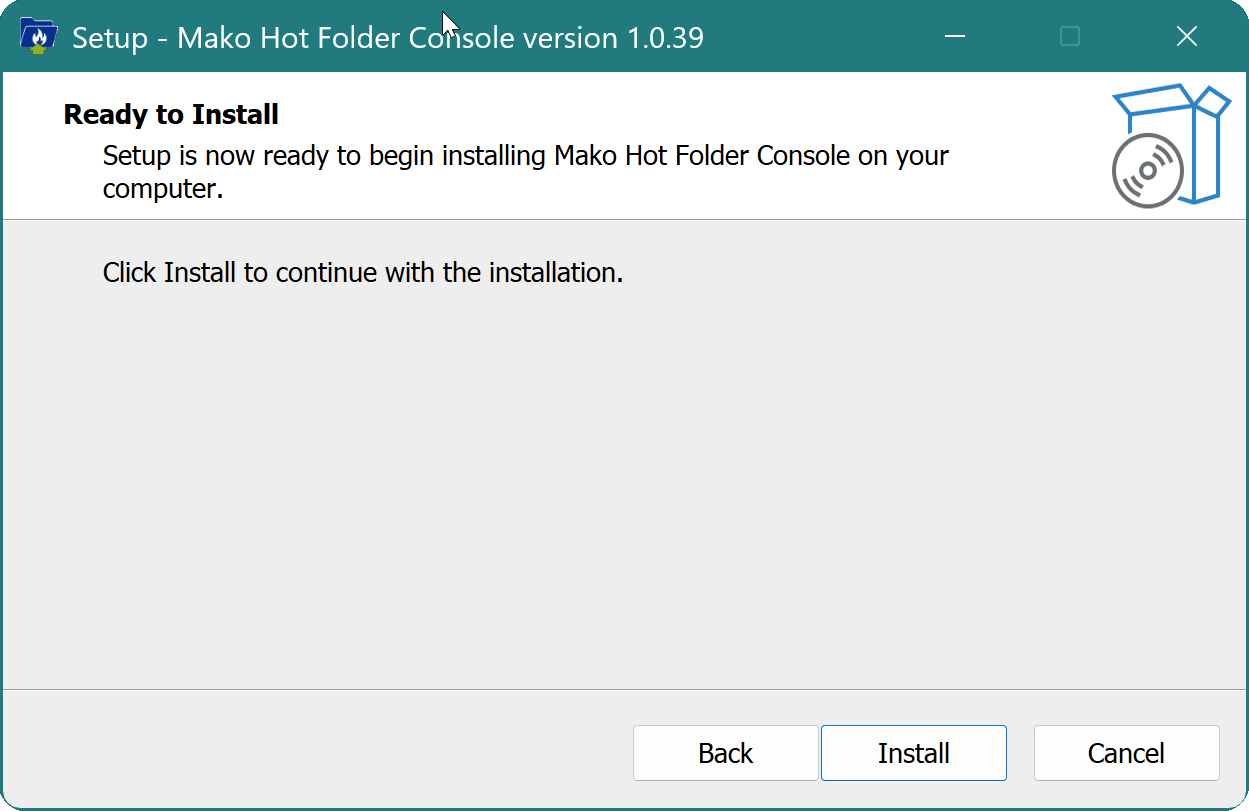 2. |
|---|---|
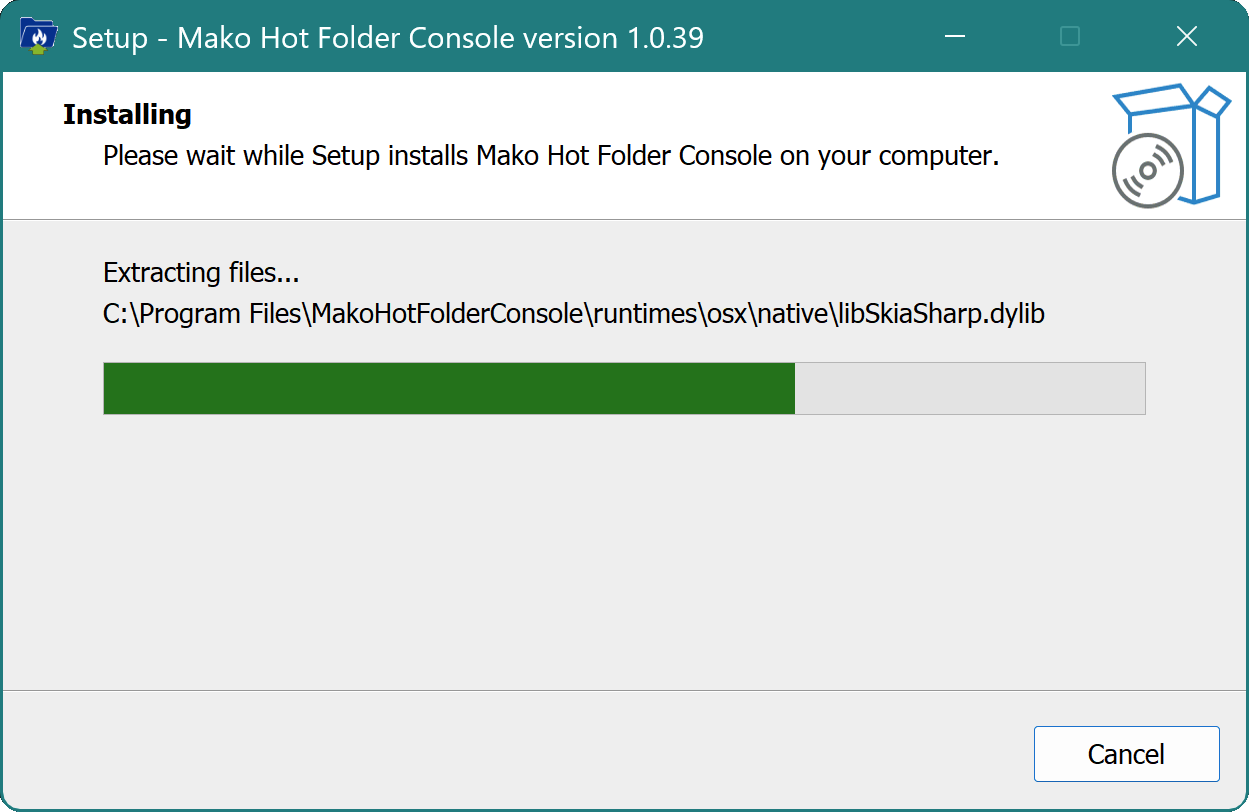 3. | 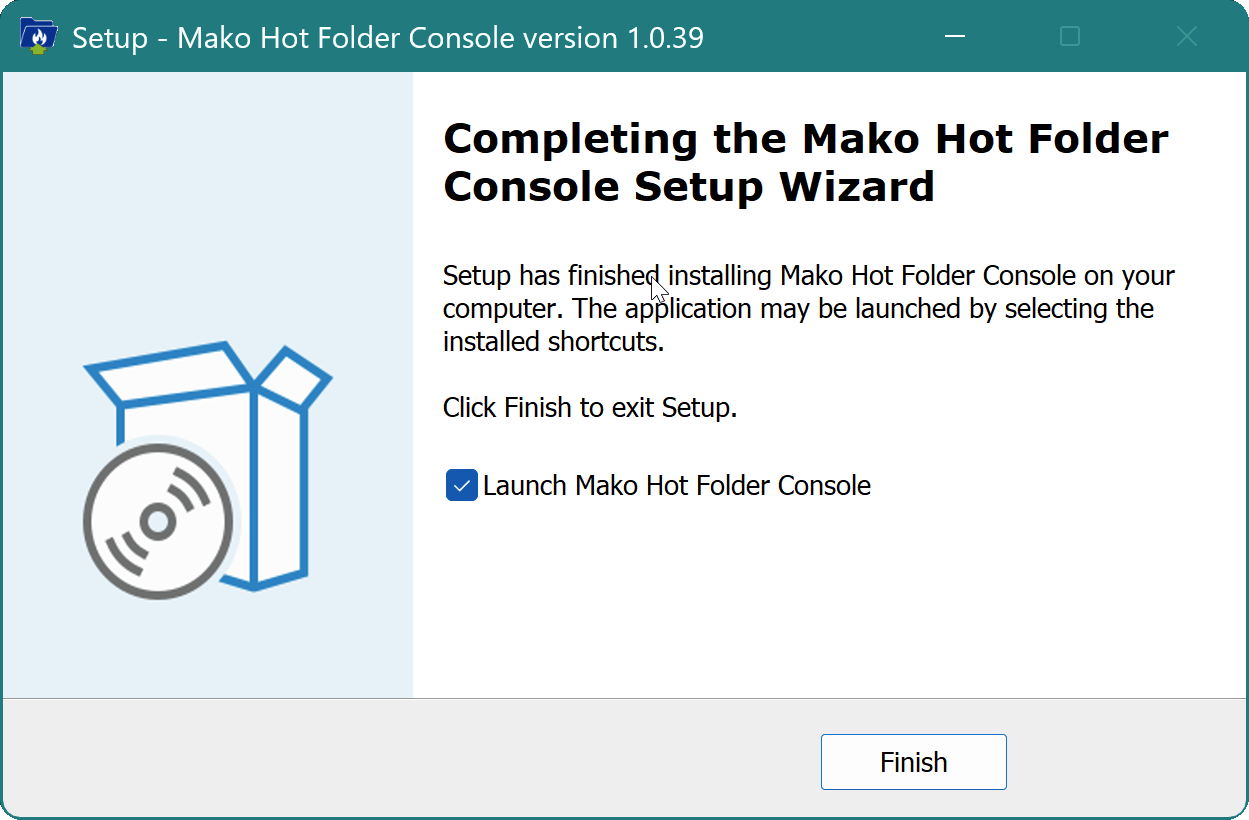 4. |
Starting and stopping the application
When started from the start folder icon, the application window opens with no hot folders shown. There are two behaviors to be aware of:
Attempting to start another instance of the application will result in the existing application window gaining focus
Clicking the Close window button (top right) will only minimize the application
System tray icon
To exit the application, it’s necessary to use the system tray icon that is added at application startup. This icon has a right-click menu.
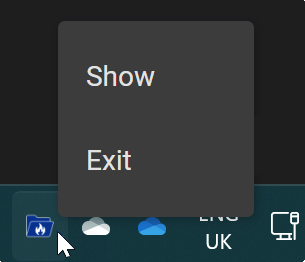
System tray icon
Show – reopens a minimized window
Exit – Exits the application
This exit method saves settings. Exiting any other way, for example by killing the application from the task manager or restarting the PC, will result in the loss of changes that may have been made to folder settings or color preferences.
Exiting the application will not automatically stop processing that has already started, as MICR Preprocessor is run as a separate process and will continue.
To stop processing, it’s necessary to do so in the task manager. The MICR Preprocessor appears in the Background processes section with its file description, “Utility to manipulate inks for MICR printing”.
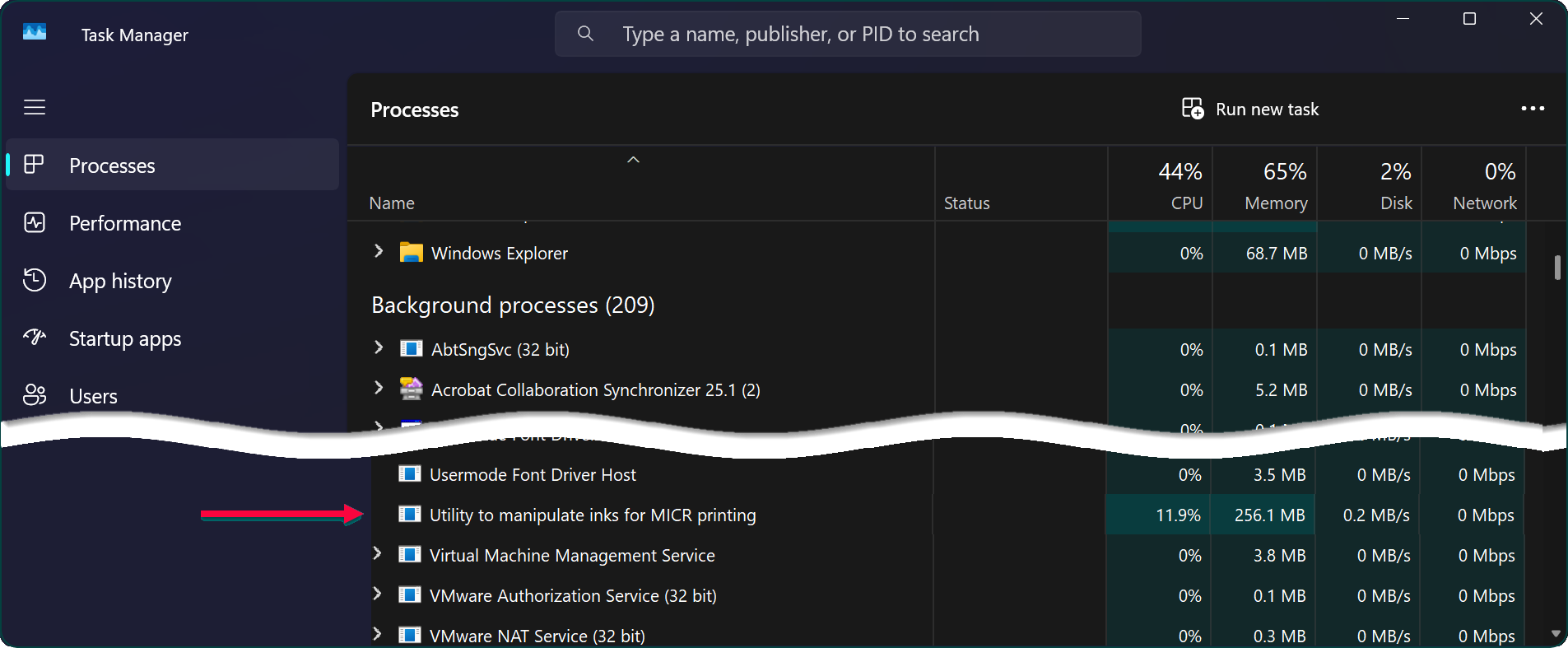
Application window
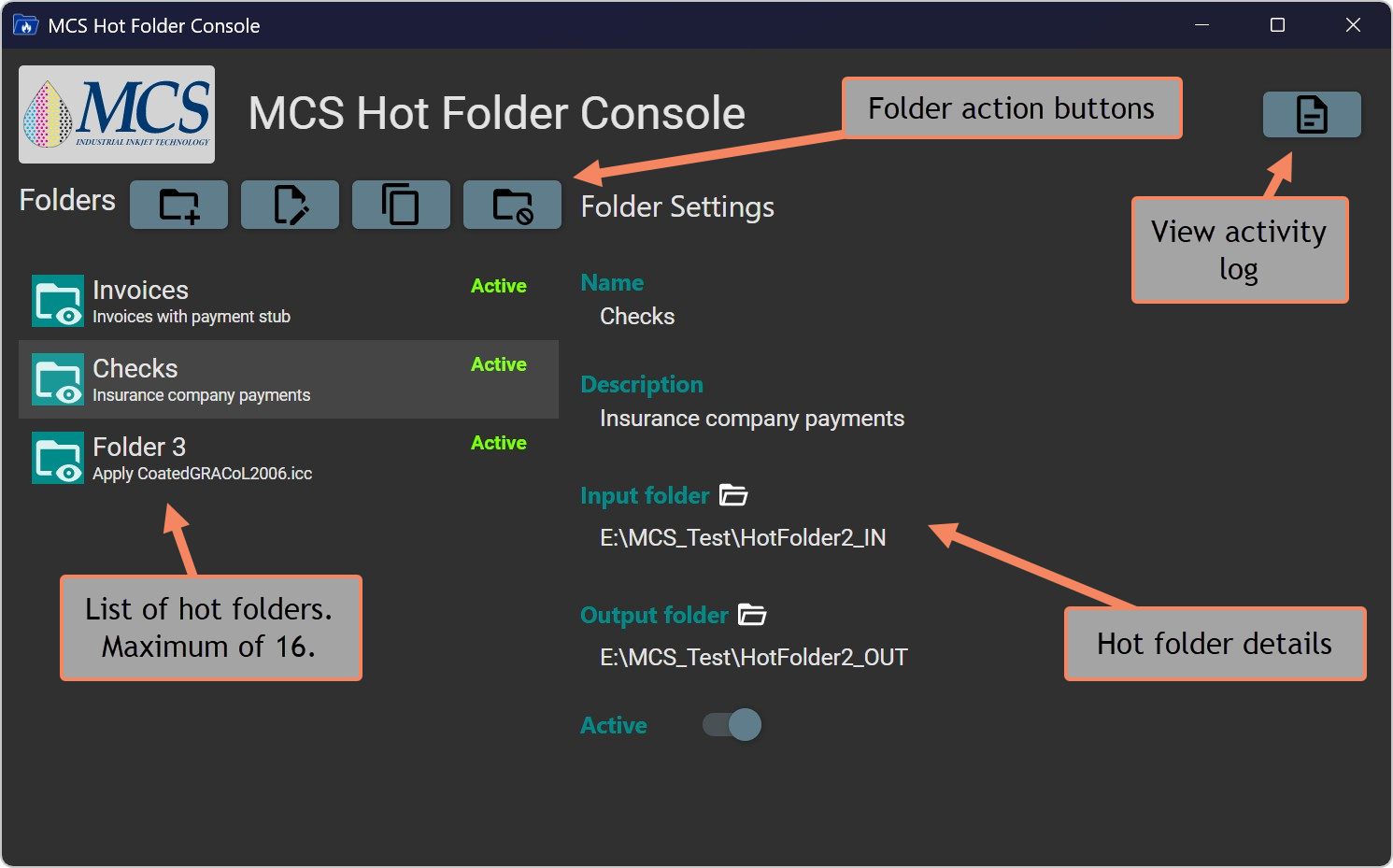
Hot Folder Console application window
On the left, a scrollable list of hot folders is displayed. Click to select, and the corresponding folder details are displayed on the right.
The small folder icons next to Input folder and Output folder can be clicked to open the folder in Windows Explorer. (Roll over the icon until you see a finger pointer and the tooltip Open folder before clicking)
Managing hot folders
Four folder ‘action’ buttons are provided - Add, Edit, Duplicate and Delete
 Add
Add
Click to open a new folder settings dialog, with default settings for the folder name and description. Valid folder paths for input and output must be completed for the OK button to be enabled. See Edit for further details.
This button is disabled if the maximum number of folders (16) has been reached.
 Duplicate
Duplicate
This button will create a new folder with settings copied from the selected folder. The folder settings dialog is then opened to allow the user to specify the input folder, which has to be unique, and to make any changes.
This button is disabled if there is no folder selected, or if the maximum number of folders (16) has been reached.
 Delete
Delete
This button immediately deletes the selected folder, with no confirmation dialog.
This button is disabled if there is no folder selected.
Editing folder settings
 Edit
Edit
This button is enabled when a folder is selected. It opens the folder settings dialog:
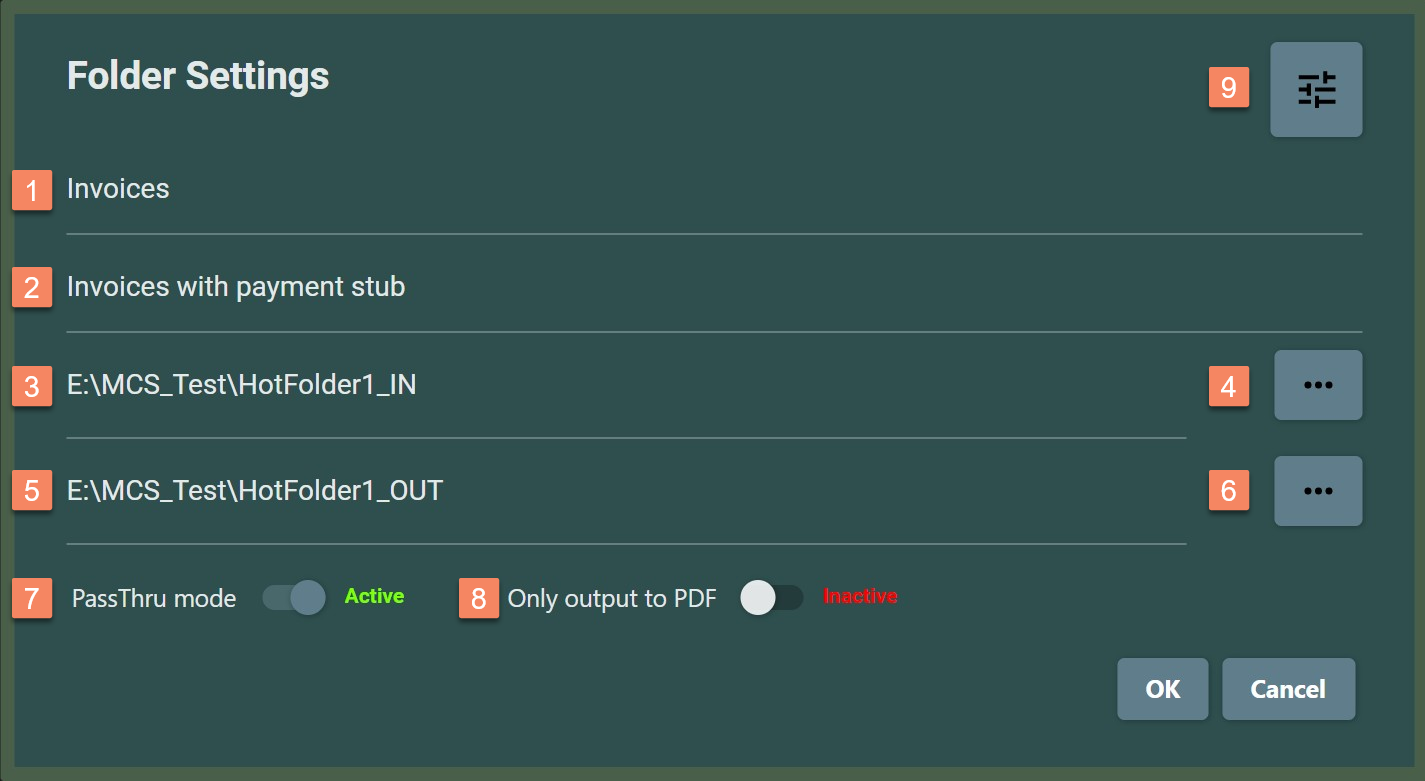
Folder settings dialog
[1] Folder name: Enter a folder name. Defaults to Folder <n> where n is the number of existing folders plus one.
[2] Folder description: Add a text description
[3] Input folder path: This field is read only; to add or update, click the browse button marked with three dots [4].
This is the folder that will be monitored for incoming files; those with a valid extension (.ps or .pdf) will trigger processing with MICR Preprocessor
[5] Output folder path: Use the browse button [6] to specify.
This is the folder into which MICR Preprocessor will write its result
[7] PassThru mode: When active, the input job file is deleted from the input folder after processing has completed.
[8] Only output to PDF: When active, an input PostScript job will be output as PDF. This is useful for experimenting with color settings, for example, without the need for further processing to visualize the result.
OK button: Closes the dialog, saving any changes made. This button is disabled until valid folders have been specified.
Cancel button: Cancels the dialog, discarding any changes.
 Folder color preferences [9]
Folder color preferences [9]
This button opens the folder color preferences dialog. It is divided into two sections, CMYK ICC Profile and Non-MICR black generation.
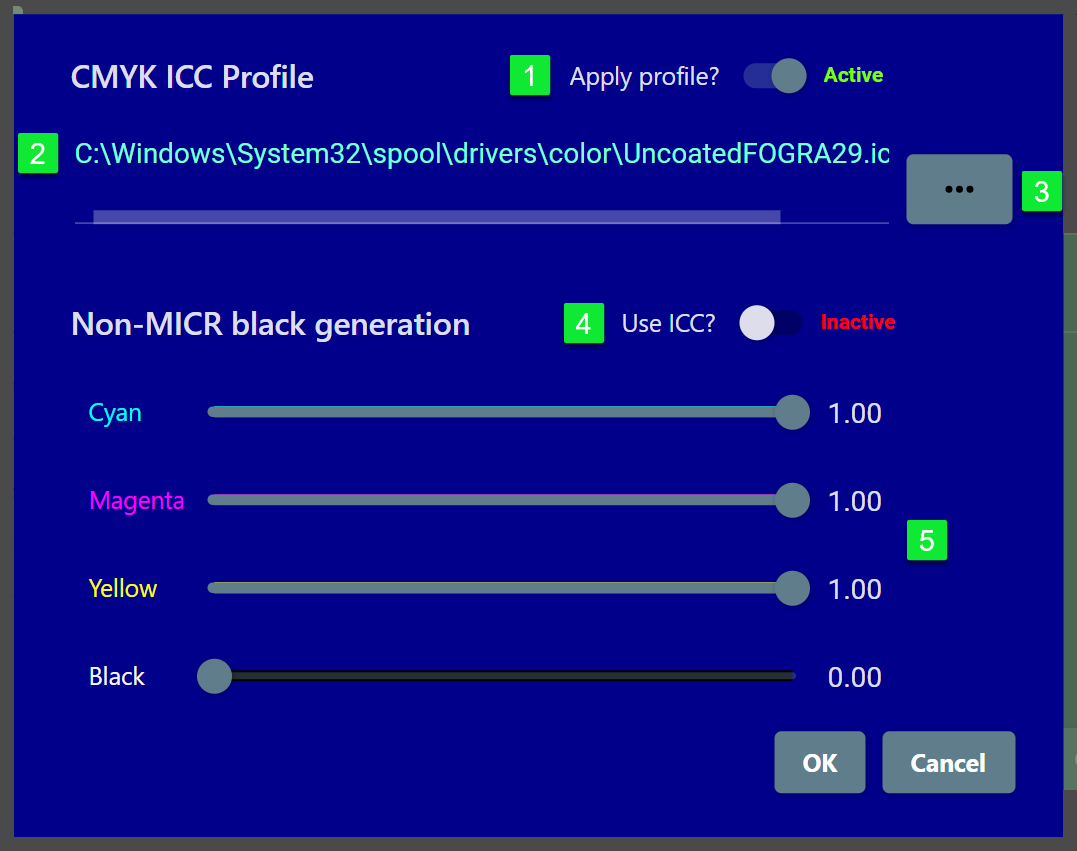
Folder color preferences dialog
CMYK ICC Profile
Specifies the path to an ICC profile that is used to convert the colors in the job to CMYK. To use:
Click the Apply profile toggle [1] to activate the selection button [3], then use this to browse for an ICC profile on disk
The path defaults to the usual folder Windows uses to store color profiles
When you have made your selection, the path will be shown at [2]
If [1] is inactive, the MICR Preprocessor uses Mako’s default CMYK colorspace, which is SWOP.
Non-MICR black generation
Specifies the way in which non-MICR black is generated. There are two options:
Use the built-in profile to generate the non-MICR black
To choose this option, make the toggle [4] active
Choosing this option disables the CMYK sliders
Choose maximum CMYK values
The sliders [5] to specify the recipe of C, M, Y & K ink values to be applied to recolor page elements other than text in a MICR font.
The values are specified for each color channel; the default values are C=100%, M=100%, Y=100% and K=0%.
OK button
Closes the dialog, saving any changes made.
Cancel button
Cancels the dialog, discarding any changes.
Processing jobs
The main screen lists the available hot folders with a name, description and whether they are Active or Inactive. An Active folder is one that is polled for new files to be processed, whereas an Inactive folder is ignored.
 Log
Log
This button opens Notepad and loads the activity log maintained by the application. The log lists when a folder is activated or deactivated; every change made to folder settings and color preferences, and finally every processing event. Each processing event shows the exact arguments used to invoke MICR Preprocessor, and its responses.
